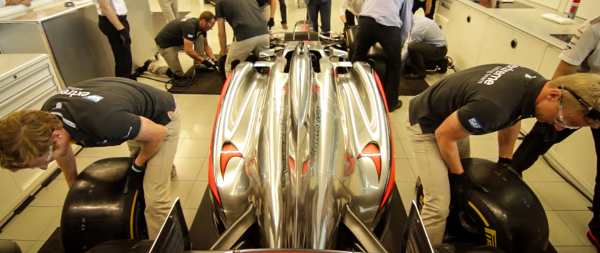
McLaren is in pole position when it comes to Formula 1 racing.
The company is the epitome of team work, with hundreds of people working towards one sole purpose: to win every F1 race they compete in. This involves not only the drivers, but the people in the pit, the people in mission control, the strategists, the designers, the engineers, the mechanics, and of course, those involved with the technology.
McLaren’s Applied Technology division works to identify and manage projects that leverage technology and expertise within the McLaren Group, applying them beyond the core business of motor sports.
MAT works on the basis of three main aims: to get the most out of their work through high performance design, to use forward looking practice through simulations systems and to enhance performance management systems.
These areas overlap in such a way that they can cerate meta-products that can be used across multiple industries by creating dynamic designs in a virtual environment and using smart systems to analyse data to anticipate and adapt their results in realtime.
"One of MAT’s real strengths comes in understanding what our clients really want and finding ways to present the data intuitively for them. We have been doing this for decades in Formula 1, where engineers interpret immensely complex information to produce very simple instructions for the drivers," says Jim Newton, market development director at McLaren Applied Technologies.
The MAT team says that their most significant achievement to date was Amy Williams’ gold medal at the 2010 Winter Olympics. The BlackRoc Skeleton Sled may just seem like a sheet of metal to most, but reaching forces of up to 5G, it is a real feat of aerodynamic engineering, and a great achievement for the MAT engineers.
McLaren is currently working with the SAP Extreme Sailing team to look at ways in which data collection could be used to improve their race strategy. Additionally, the carbon fibre shells or McLaren’s F1 cars is the same material used for the hull of SAP’s sailing boats. So anything that can make the cars faster and stronger will do the same for the boats.
McLaren works in partnership with UK Sport, applying gadgets to the cycling, canoeing, rowing and sailing squads, or as Newton puts it, "the sitting down sports."
For example, in rowing, sensors are used on the oars to measure the speed, movement and angle it enters and exits the water, combined with a heart-rate monitor on the athlete to work out how efficient the rower is.
But more data does not necessarily mean better data. The sensors collect such a wealth of information, it is important to have an effective data management system in place.
"At McLaren Applied Technologies we look to measure everything we wish to manage, and we look to measure parameters to a level of detail that enables us to achieve the performance increments that we are interested in," says Newton.
"This can produce a large amount of high frequency data streams and we have developed solutions and techniques to gather, store and turn those data streams into meaningful insight. McLaren Racing, which deals with vast data streams, often running into billions of pieces of information per car per race, are increasingly working with SAP to help them analyse their data and produce meaningful insights."
MAT’s sensors extend beyond sport to use in factories. Newton spoke of a toothpaste factory that maximized its efficiency by not only monitoring the machines, but also the workers. This enabled the data from the workers enabled the overall information collected to be substantially more reliable and improve the overall manufacturing process.
The human monitoring sensors are also being used in healthcare. A realtime patient monitoring system has been developed to allow doctors to observe how a patient is responding to treatment 24/7.
"Through the McLaren Applied Technologies ‘LifeInsight’ programme we aim to bring a step change to the research and delivery of health and wellness through the combination of applied biotelemetry, analytics and iconic design," says Newton.
"In the pharmaceutical sector we are working in partnership with GlaxoSmithKline and we are actively building partnerships in other areas of the health and wellbeing industry."
MAT has also developed its own cloud system to collect and manage data: "Many of the common reasons one would give for utilising cloud infrastructure would also apply to our solutions such as scalable computing and storage," says Newton.
"For us the ubiquity of input and output is also key when the teams we are working with (professional or sporting) are often globally distributed and on the move. The fact that everyone can access information in the cloud and update it in real time makes it a useful tool."
As MAT continues to transfer technology from the track to the cloud, more and more sectors are benefiting. And thanks to it’s partnership with IO Data centres, this innovation can continue to flourish. Newton says: "The challenge and opportunity is to revolutionise the design, deployment and management of data centre capacity through the seamless synthesis of hardware and software."






